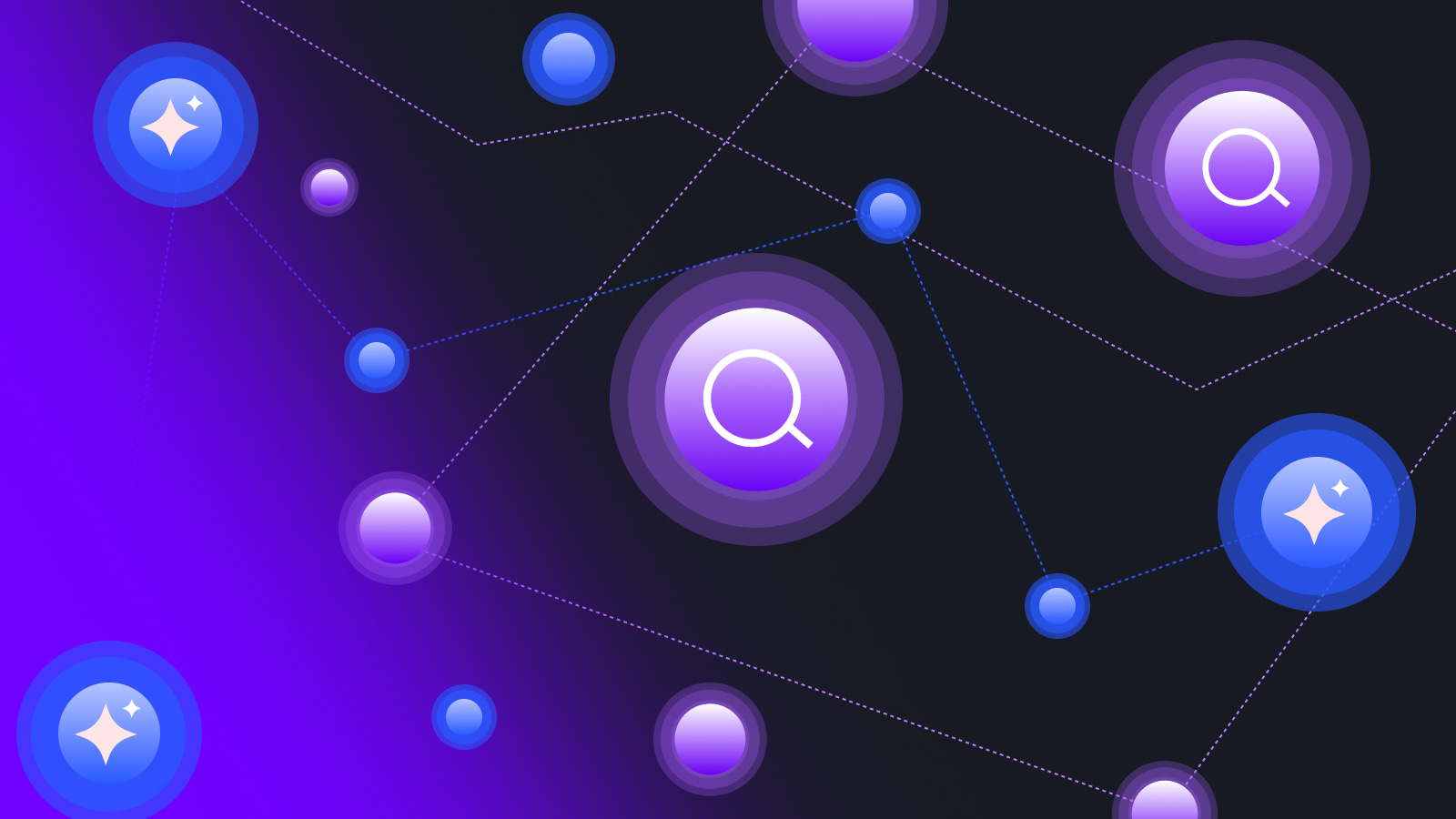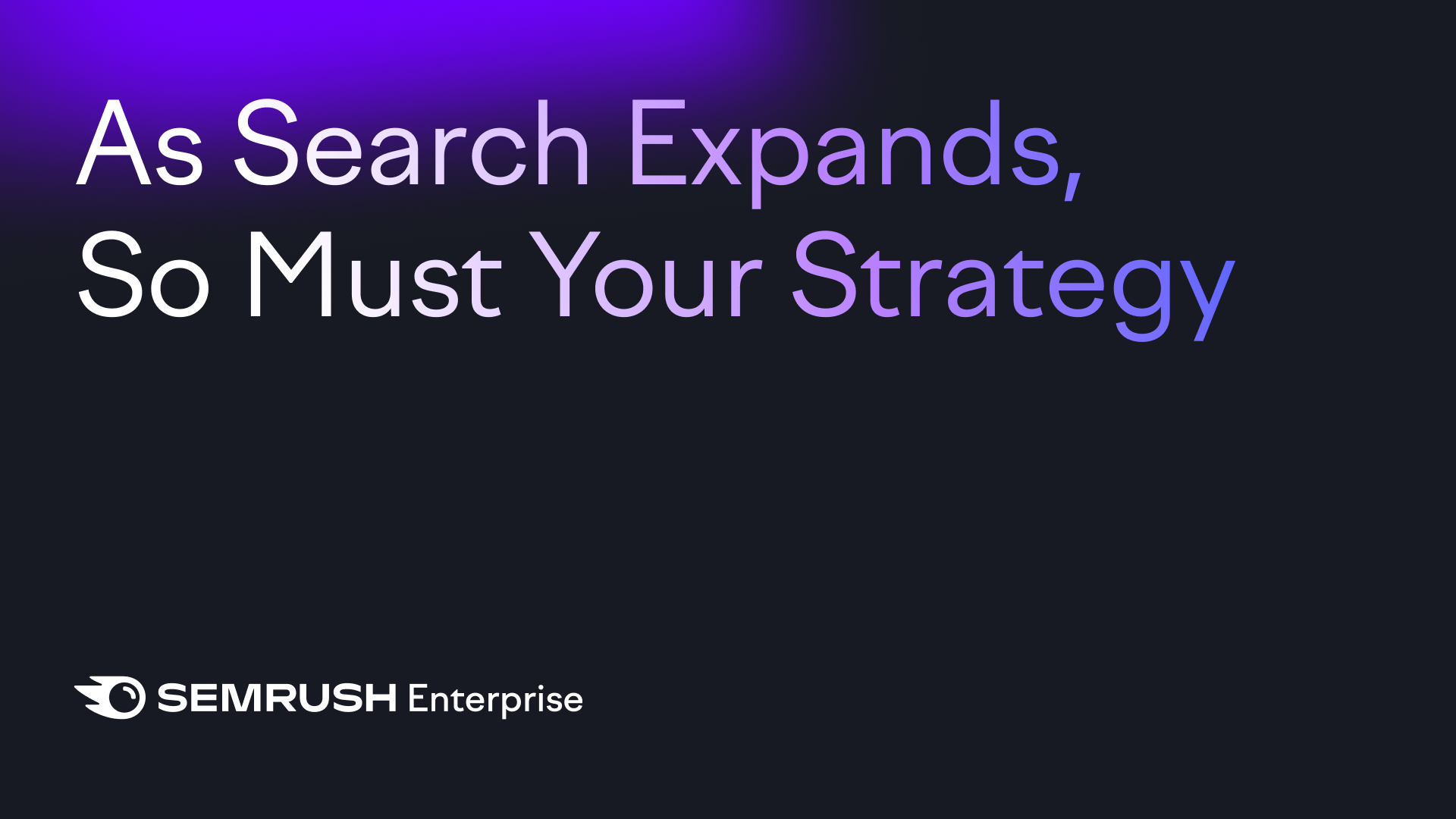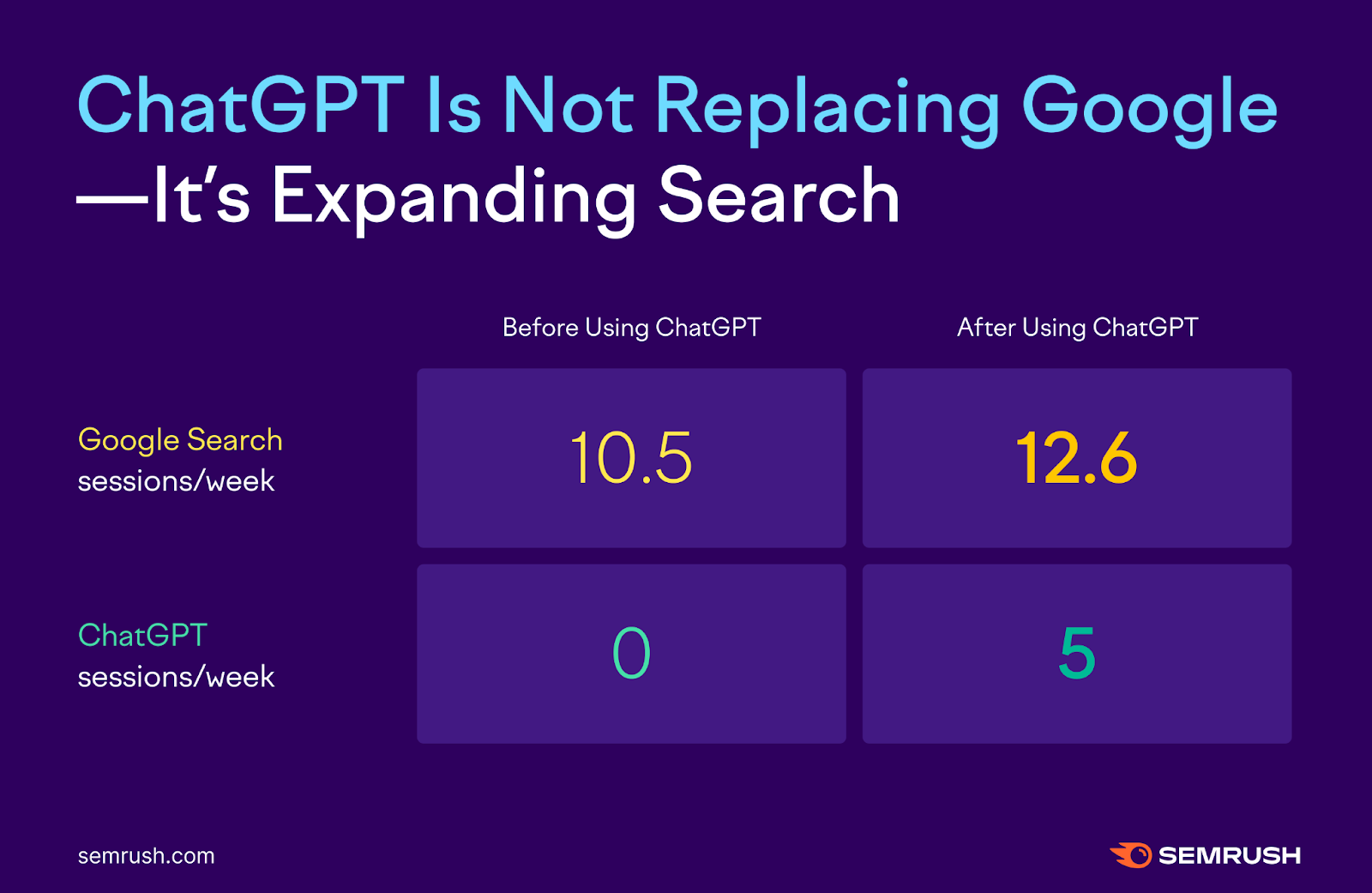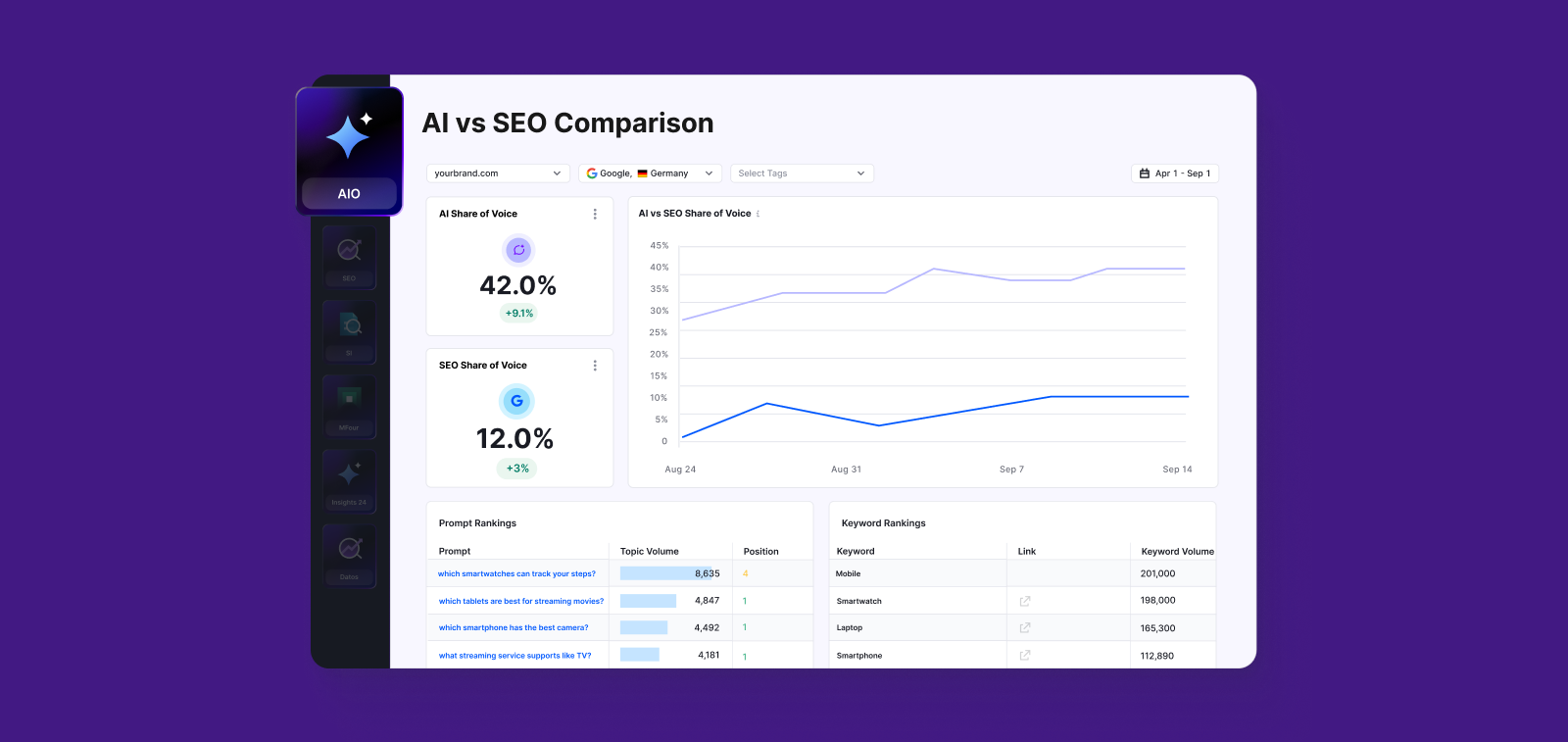It’s not either SEO or AI search – your strategy needs both by Semrush Enterprise


AI Overviews, ChatGPT, zero-click results, and other recent developments have all triggered the latest wave of goodbyes to SEO.
Except SEO isn’t dead. It might even be thriving.
Search engines still command approximately 88% of all search traffic. But alongside this, AI usage is almost doubling. So what gives?
Well, consumers don’t care about AEO versus GEO versus SEO. Or even necessarily choosing between Google and ChatGPT. They simply use both.
Why the either/or narrative is dangerous
The marketing world loves a good binary. But opposing search engines and AI search against one another is a false choice.
These aren’t competing realities. They’re parallel streams of discovery that smart brands must master simultaneously.
The psychology behind this false choice is simple: we crave certainty. We want to know where to invest our limited resources. Should we double down on the proven channel or pivot to the emerging one?
- Overindexing into AI search over Google organic means giving up the majority of search market share that counts now.
- Hesitating means that competitors can open up moats that can’t be closed in the future.
So, where are consumers actually searching?
The key assumption of the either-or narrative is that AI search’s growth comes at the expense of Google organic usage. Google’s global search market share dropped to 89.62% as of March, the lowest point in more than a decade.
Meanwhile, ChatGPT’s growth trajectory puts it on track to reach 1 billion users by the end of 2025. Seems like an open-and-shut case, right?
Except, consumers aren’t abandoning Google. They’re simply searching more, across a wider range of platforms.
ChatGPT adoption didn’t reduce Google organic usage, according to recent Semrush data. Instead, Google search sessions actually increased after users adopted ChatGPT, jumping from 10.5 to 12.6 sessions per week.
People aren’t substituting their typical Googling with ChatGPT – they’re adding AI on top of their existing search behavior.

This creates a compounding opportunity, especially in ecommerce.
Search engines remain massive for ecommerce:
- At least 43% of ecommerce traffic comes from Google’s organic search.
- Organic traffic accounts for 23.6% of all ecommerce sales.
Alongside this, shopping queries in ChatGPT jumped from 7.8% to 9.8% of all searches between January and June.
The total addressable market for search visibility has multiplied. Consumers are conducting more searches than ever, but now those searches are distributed across traditional and AI-powered channels.
So, how can brands seize the opportunity of holistic search?
Tracking: Comprehensive measurement is a must
The first step in building a truly connected optimization strategy is to ensure comprehensive tracking is in place. However, understanding your performance across traditional search and AI responses often means operating in siloes and switching.

For big brands, this is where enterprise tools become key.
Semrush Enterprise AIO enables brands to track visibility across traditional search engines while simultaneously monitoring brand mentions, citations, and sentiment in AI platforms, such as ChatGPT and Google’s AI Mode.
The integration matters, as it enables a true understanding of brand visibility across search environments and provides a single view for identifying any gaps or opportunities. Single moves can be made that bring performance dividends across both forms of search.
Content optimization: Same principles, different execution
On the content side, while SEO best practices largely support AI search performance, your content will likely need some structural changes and checks for topical coverage.
Here are some guiding questions to help ensure your content performs across both Google organic and AI search.
Are you answering what users actually ask?
The fundamental “who,” “what,” “where,” “when,” and “why” information that forms the backbone of comprehensive content.
If users ask “How does this work?” or “Why does it matter?” and your article doesn’t quickly address it, you lose relevance in both search formats (as well as reader interest).
AI models recognize when content comprehensively addresses the question clusters users actually care about. Covering multiple key questions upfront improves your topical completeness and, by virtue of covering more questions, increases your chance of citation in AI responses.
Are you giving the topic full context?
AI models understand topics as networks of related ideas, not isolated keywords. After evaluating key questions, cluster coverage assesses whether your article includes relevant subtopics.
Writing about sustainable products? Consider broadening the discussion to include eco-friendly materials, ethical sourcing, and green packaging.
This helps deepen your content’s authority and increases the likelihood your brand appears across a wider range of searches. However, don’t confuse aiming for conceptual completeness with keyword stuffing. Be realistic when considering what’s relevant.
Is your content straightforward for AI (and humans)?
Perfect information won’t perform if it’s difficult to read. Check that content follows a logical structure, using guiding questions where possible.
Readability, formatting, and clarity ensure that both people and AI models accurately interpret the meaning of your content. This covers everything from consistent heading hierarchy to balanced paragraph lengths and scannable formatting.
Swap guesswork for guidance
Semrush Enterprise AIO addresses this through dual-channel optimization capabilities. The platform provides real-time scoring that identifies how to structure content for maximum search performance, while flagging opportunities for more direct answers to key questions or comprehensive topic coverage.

The key phrase here is doing so holistically. You aren’t optimizing twice but instead creating content that performs across both.
The brands that execute this successfully are building content hubs that capture traditional long-tail traffic while simultaneously positioning themselves for AI platform citations.
The revenue connection: Why this matters to your bottom line
Let’s connect the dots through the metric that ultimately matters: revenue impact.
AI search visitors are 4.4 times as valuable as the average organic search visitor in conversion terms. These users arrive further down the funnel, with more context, and higher intent. They’ve often used AI to research options comprehensively before clicking through to specific sites.
Meanwhile, search engines still drive the overwhelming majority of discovery and brand awareness. It’s the top-of-funnel engine that introduces potential customers to your category and brand.
- Neglecting search engines sacrifices volume.
- Neglecting AI search sacrifices conversion efficiency.
Brands optimizing for both channels are capturing premium customers right now while maintaining volume from established channels. They’re building a customer acquisition engine that doesn’t rely on a single point of failure.
What this means for brands
The time of singular search optimization ended the moment AI platforms began meaningfully diverting traffic. Here’s what actionable adaptation looks like:
Immediate actions:
- Implement tracking across both traditional and AI search channels. You can’t optimize what you don’t measure.
- Audit your top-performing content through a dual-channel lens. Does it appear in AI platform citations? If not, why not?
- Identify structural content gaps where competitors appear in AI answers but you don’t.
90-day priorities:
- Check whether your approach to content supports both traditional crawling and AI digestion.
- Audit the structure of your most important content and pages.
- Test AI-optimized content while monitoring overall search impact.
Strategic imperatives:
- Build organizational capabilities that treat search holistically rather than as separate silos.
- Consider platforms like Semrush Enterprise that enable unified tracking, analysis, and optimization.
- Develop content strategies that capture customers wherever they begin their search journey.
The false choice between traditional SEO and AI search is a fundamental misunderstanding of how modern search discovery works.
Your customers aren’t choosing between Google and ChatGPT. They’re using both, often in the same research session. Your strategy needs to reflect that reality.
The brands that dominate search in 2026 and beyond will recognize that customer discovery is diversifying across multiple channels and built systems to win everywhere customers search.










Recent Comments